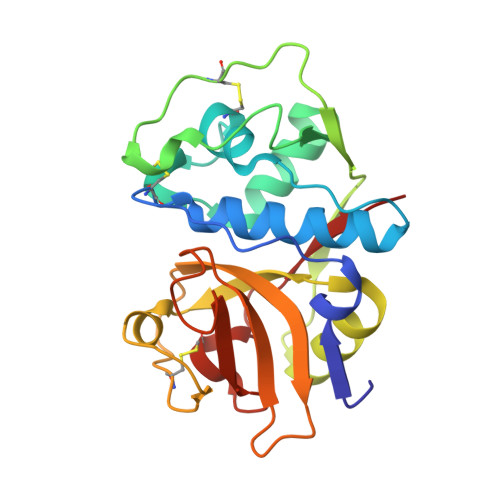Vinyl sulfones as antiparasitic agents and a structural basis for drug design.
Kerr, I.D., Lee, J.H., Farady, C.J., Marion, R., Rickert, M., Sajid, M., Pandey, K.C., Caffrey, C.R., Legac, J., Hansell, E., McKerrow, J.H., Craik, C.S., Rosenthal, P.J., Brinen, L.S.(2009) J Biological Chem 284: 25697-25703
- PubMed: 19620707
- DOI: https://doi.org/10.1074/jbc.M109.014340
- Primary Citation of Related Structures:
2OZ2, 2P7U, 3BWK - PubMed Abstract:
Cysteine proteases of the papain superfamily are implicated in a number of cellular processes and are important virulence factors in the pathogenesis of parasitic disease. These enzymes have therefore emerged as promising targets for antiparasitic drugs. We report the crystal structures of three major parasite cysteine proteases, cruzain, falcipain-3, and the first reported structure of rhodesain, in complex with a class of potent, small molecule, cysteine protease inhibitors, the vinyl sulfones. These data, in conjunction with comparative inhibition kinetics, provide insight into the molecular mechanisms that drive cysteine protease inhibition by vinyl sulfones, the binding specificity of these important proteases and the potential of vinyl sulfones as antiparasitic drugs.
- Department of Cellular and Molecular Pharmacology, University of California, San Francisco, California 94158-2550, USA.
Organizational Affiliation:

















